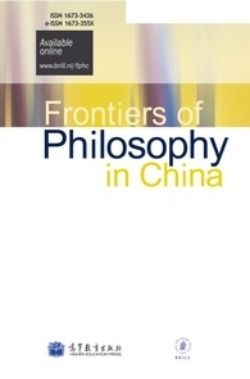Jos de Mul. Das Schauspiel des Lebens. Dilthey and the historical biography. In: Revue Internationale de Philosophie, (2003), no.2, 99-116.
Das Schauspiel des Lebens. Wilhelm Dilthey and historical biography
"Uber den wissenschaftlichen Charakter der Biographie sind die Ansichten der Historiker geteilt." [1]
These words, written by Wilhelm Dilthey about a hundred years ago, are just as true today as they were then. As in Dilthey's time, many historians still deny that the historical biography is scientific in nature, because of its narrative and literary character. It isn't without irony that authors of literary fiction, conversely, often doubt the literary character of historical biographies because they are not entirely a work of imagination. One might say that historical biography is situated in a no-man's land between art and science.
In order to understand the discussion concerning the status of the historical biography, we have to view it within the broader context of the debate on the status of historiography. This debate has accompanied modern historiography from its birth in the early nineteenth century. Before then the question concerning the relationship between the artistic and scientific dimension of historiography virtually played no role. The reason for this was that before the nineteenth century these two dimensions could barely be distinguished. The word 'novel' not only referred to Active stories, but also to the kind of stories we nowadays call historical narratives. However, under the influence of rationalism and empiricism, literature and historiography gradually became different autonomous genres. The emergence of the modern discipline of historiography was at least partly motivated by the presupposition that knowledge only deserves this title when it is rationally and empirically tested and attains a certain level of certainty.[2] These requirements were inspired by the impressive success the natural sciences and the new technologies connected with them had had since Newton. Based on the discovery of causal relationships in nature, these sciences were not only able to explain natural phenomena, but to predict and to control them, as well. As a result, the objectivity of the natural sciences increasingly began to function as an ideal for all sciences. After the middle of the nineteenth century, the ideal of a 'unified science' became an integral part of the repertoire of (neo)positivist scientists and philosophers.




 Abstract Starting from the often-used metaphor of the “horizon of experience” this article discusses three different types of intercultural hermeneutics, which respectively conceive hermeneutic interpretation as a widening of horizons, a fusion of horizons, and a dissemination of horizons. It is argued that these subsequent stages in the history of hermeneutics have their origin in—but are not fully restricted to—respectively premodern, modern and postmodern stages of globalization. Taking some striking moments of the encounter between Western and Chinese language and philosophy as example, the particular merits and flaws of these three types of hermeneutics are being discussed. The claim defended is that although these different types of hermeneutics are mutually exclusive from a theoretical point of view, as interpreting beings in the current era we depend on each of these distinct hermeneutic practices and cannot avoid living on them simultaneously.
Abstract Starting from the often-used metaphor of the “horizon of experience” this article discusses three different types of intercultural hermeneutics, which respectively conceive hermeneutic interpretation as a widening of horizons, a fusion of horizons, and a dissemination of horizons. It is argued that these subsequent stages in the history of hermeneutics have their origin in—but are not fully restricted to—respectively premodern, modern and postmodern stages of globalization. Taking some striking moments of the encounter between Western and Chinese language and philosophy as example, the particular merits and flaws of these three types of hermeneutics are being discussed. The claim defended is that although these different types of hermeneutics are mutually exclusive from a theoretical point of view, as interpreting beings in the current era we depend on each of these distinct hermeneutic practices and cannot avoid living on them simultaneously.





